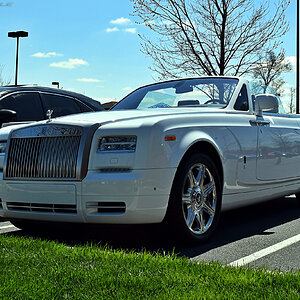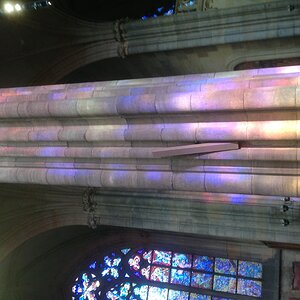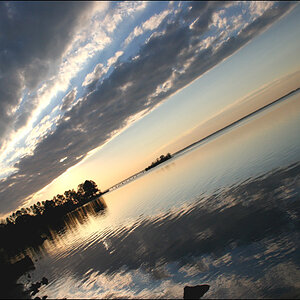- Joined
- Sep 2, 2005
- Messages
- 14,455
- Reaction score
- 3,328
- Can others edit my Photos
- Photos OK to edit
Ok, so doing a bit of research to understand the "difference" between tone-mapping and HDR...
What I've come up with is that HDR is high dynamic range... we know this, however, I think the key bit is that the word "high" is relative. In theory, any of the images that we produce that have a higher dynamic range than what is possible to capture with a single exposure, could be called "high dynamic range", but then could also be easily argued as one person's "high" may be higher than another's. In the end, I think that this is a descriptive and subjective term, but it arguably applies to any image that would display more detail and tones than would be normally possible with a single exposure.
Tone mapping, on the other hand, is a process... a process "which transforms the image into a low dynamic range image suitable for viewing on a monitor" (source: Wikipedia) This is an interesting perspective, because we understand monitors and cameras to have a limited dynamic range (thus implying LOW dynamic range), and yet the images that we generate via the Tone Mapping process are usually the images that we parade around as "HDRs".
So, in short... we use a tone mapping process to generate low dynamic range images such that they can be displayed on a monitor, but that have a higher dynamic range than would be possible to capture with a single exposure from a camera.
What I've come up with is that HDR is high dynamic range... we know this, however, I think the key bit is that the word "high" is relative. In theory, any of the images that we produce that have a higher dynamic range than what is possible to capture with a single exposure, could be called "high dynamic range", but then could also be easily argued as one person's "high" may be higher than another's. In the end, I think that this is a descriptive and subjective term, but it arguably applies to any image that would display more detail and tones than would be normally possible with a single exposure.
Tone mapping, on the other hand, is a process... a process "which transforms the image into a low dynamic range image suitable for viewing on a monitor" (source: Wikipedia) This is an interesting perspective, because we understand monitors and cameras to have a limited dynamic range (thus implying LOW dynamic range), and yet the images that we generate via the Tone Mapping process are usually the images that we parade around as "HDRs".
So, in short... we use a tone mapping process to generate low dynamic range images such that they can be displayed on a monitor, but that have a higher dynamic range than would be possible to capture with a single exposure from a camera.





![[No title]](/data/xfmg/thumbnail/38/38732-8364f5190d3f325e8ee02d23404a610c.jpg?1619738703)


![[No title]](/data/xfmg/thumbnail/35/35876-de9861d35b5abad8ad1cf7c32772c9fb.jpg?1619737202)
![[No title]](/data/xfmg/thumbnail/30/30881-c36788e79b12973b7bf57c94b46961e9.jpg?1619734495)



![[No title]](/data/xfmg/thumbnail/40/40414-0d191cae467ae156374e5d8744c94b85.jpg?1619739465)
![[No title]](/data/xfmg/thumbnail/35/35878-753a9d58c095f0e1aaa96d03c025f6ce.jpg?1619737205)